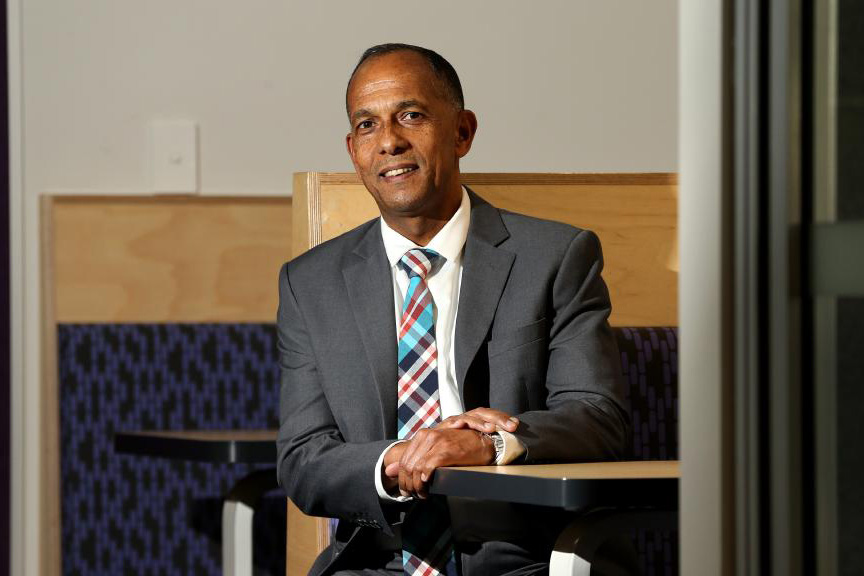
In June, construction started on Santa Sophia Catholic College – a revolutionary $123m vertical school located in Sydney’s north-west.
The $123m project, launched by the Catholic Education Diocese of Parramatta, will have capacity for 2,000 students from Kindergarten to Year 12 and 130 staff when its doors open by Semester 2, 2021.
The six-storey school will operate between 6am to 6pm and include four linked buildings with learning areas, creative and performance hubs, rooftop play spaces and sports facilities.
In recognition of the developmental stages in a child’s life, the College is comprised of four different schools: The School of Genesis: Early Years (Ages 3 to 6); The School of Curiosity (Ages 6 to 9); The School of Connections (Ages 10 to 14); and The School of Challenge (Ages 15 to 18).
Once they reach The School of Challenge, students get the opportunity to work with mentors, businesses and organisations who provide the instructional learning needed for university or tertiary pathways once they leave school.
The College also assists students with internship work placement, developing and running their own businesses, apprenticeship opportunities and specific skills and goals related to their personal and work development.
The College’s founding principal, Mark DeVries said teachers at the College use specific pedagogical practices that align with the different developmental stages of the students – Play Based Inquiry, Guided Inquiry, Rigorous Learning Focused Projects and Blended Mastery.
He said the latter of these is a major focus of Santa Sophia’s Flipped Learning approach, which has resonated with teachers so much that Macquarie University has enlisted its teaching graduates to undertake their practical teaching at the College.
“We are really excited to be offering future teachers an experience of contemporary learning with this partnership with Macquarie University,” DeVries told The Educator.
“We are currently exploring the post-school options for our students with Macquarie University – as well as other University partners – to allow our students to commence tertiary study while still at school”.
Power to the pupils
DeVries has long advocated for education breaking out of its archaic constraints and embracing the 21st Century – namely, equipping students with the skills for the future workplace much sooner in their educational journey.
The College walks its talk in this regard by enabling each child from Year 7 to create their own ‘Digital Portfolio’ in which they upload all their main learning tasks in every subject for all years of their schooling
The portfolios capture student learning, as well as display Certificate evidence, for VET qualifications and compile all their work in all subjects along with assessment grades and feedback.
This allows each student to reflect three questions for each unit of work: ‘Where am I going in my learning?’ ‘Where am I now in my learning?’ and ‘What are my next steps in my learning?’
DeVries said the portfolios will also ensure that parents get quicker access to the academic progress their child is making.
“Parents hate having to wait until the second term or end of the year to receive this feedback,” DeVries said.
“Through the digital portfolios, parents are easily able to follow, track and see grades for each subject, and in this way, it can be used by the school as 'Reporting in Real-Time' easily”.
Out with the old…
DeVries’ 30 years of service in Catholic education spans five schools and encompasses almost all roles that school can offer, and it is this breadth of experience that has allowed him to know what works and what doesn’t putting unconventional ideas into practice.
During his three decades of teaching and leading, DeVries has witnessed some remarkable changes in education, including the landmark Gonski 2.0 report, the overhaul of the NSW Curriculum and the dramatic changes brought on by COVID-19, just to name a few.
More recently, an independent review of NAPLAN proposed sweeping changes to the writing assessment and a greater focus on critical thinking and science.
If implemented, The Australian National Standardised Assessment (ANSA), which would replace NAPLAN in 2022, will also shift the Year 9 test to Year 10 so that it can better inform teachers, parents and students when making critical decisions regarding subject selection for years 11 and 12.
When asked about his thoughts on this, DeVries said it was a “wonderful step forward”.
“I’m supportive of NAPLAN being replaced by a new, broader test that also includes science, technology and a greater focus on critical and creative thinking,” he said.
“I like the fact that students will sit the new test at the start of Year 10 and the quick turnaround in getting the results back. Teachers could then build on these strengths and or weaknesses before the student get to Stage 6”.


